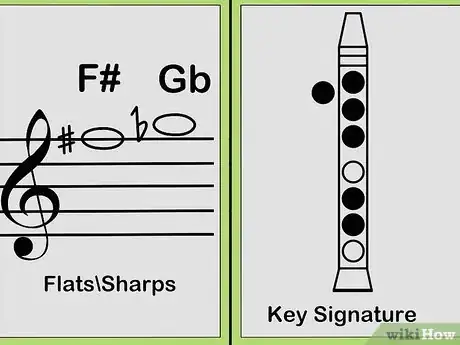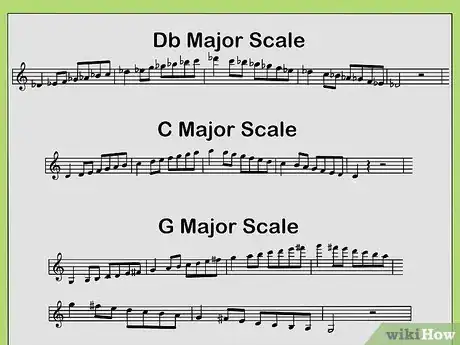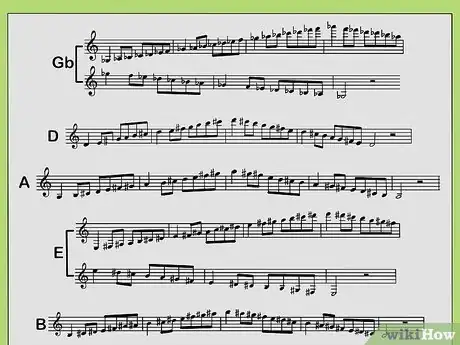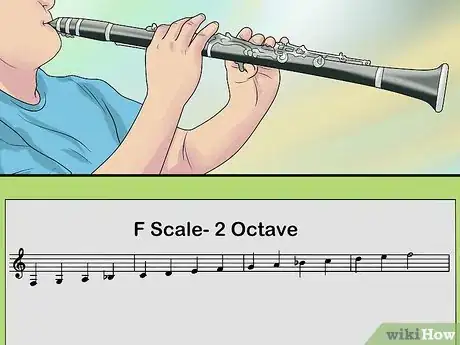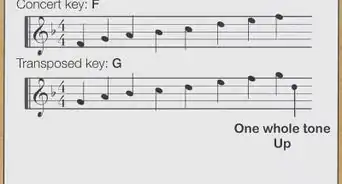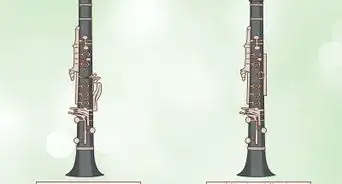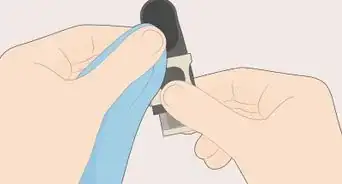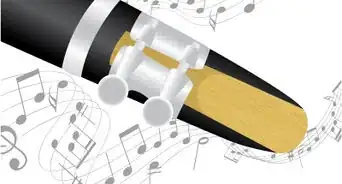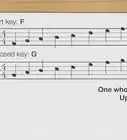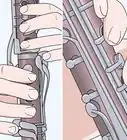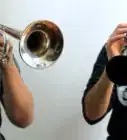wikiHow is a “wiki,” similar to Wikipedia, which means that many of our articles are co-written by multiple authors. To create this article, 35 people, some anonymous, worked to edit and improve it over time.
There are 9 references cited in this article, which can be found at the bottom of the page.
This article has been viewed 109,458 times.
Learn more...
Playing scales on the clarinet will help you get used to different key signatures and help expand your musical knowledge. Scales are extremely important in music. An example would be in the Chaconne movement in Gustav Holst's First Suite in Eb, in which there is an eighth note (quaver) run in the clarinet part that is essentially an Eb scale. Scales are used in most music, and scales are also necessary for most auditions. Memorizing the 12 major scales is always a great thing to do.
Steps
-
1Recognize flats and sharps, and understand key signatures. Flats make the notes sound a half step (semi-tone|) lower and sharps make them sound a half step (semi-tone) higher. Study your fingering chart, and refer to it if you come across a note you are not familiar with. Also be aware of notes that have two names -- for example, F# and Gb are the same, G# and Ab, etc. This will be important to know on that harder scales.
-
2Get a feel of how a scale sounds.[1] A good musician can tell if they've played a wrong note immediately, even if they've never played a certain scale before. There's a pattern or half and whole steps that you should be able to recognize without even thinking about it.Advertisement
-
3Begin by learning the B flat major scale.[2] Since the clarinet is a transposing instrument, it actually starts and ends on C (to play it one octave, start on below-the-staff C and end on third space C). All the notes in this scale are played natural. This is also a good scale to learn if you're just learning to "cross the break" -- get from the second space A to B natural and above.
-
4
-
5Learn the next few scales, that some directors might call the "intermediate" scales. These scales are often played for auditions, if the requirement is to play 7 scales, so they're important to know. These are the Db scale[5] (starts on Eb, 3 flats), the C scale[6] (starts on D, 2 sharps), and the G scale[7] (starts on A, 3 sharps). Starting to see a pattern here?
-
6Learn the last 5 major scales. These are the most difficult, and they are as follows -- the Gb scale (starts on Ab, 4 flats), the D scale (starts on E, 4 sharps), the A scale (starts on B, 5 sharps), the E scale (starts on F#, 6 sharps), and the B scale (starts on Db, 5 flats).
-
7Learn to play scales two octaves.[8] This will definitely increase your chances of doing well in auditions, and is also a good way to work on high notes. Most scales can be played two octaves without any of the highest notes (above-the-staff C# and up), with the exceptions of the C and B scales.
-
8Work on playing them 3 octaves, once you've mastered two. This is a great way to work on the highest notes on the clarinet, and again, octaves make all the difference in auditions.[9] Some scales are very difficult (almost impossible -- that would be the C and B scales) to play a third octave, so it's best to start with the ones that start the first octave the lowest -- the D, Eb E, and F scales.
-
9Learn the chromatic scale. This is also an important part of auditions, and is very useful for getting your fingering chart into your head. A chromatic scale can start on any note, and it covers the whole range. Typically, clarinets start on G, but any note is fine. The scale pattern would be G, G#, A, A# (Bb), B, B# (C), and so on. It's basically just playing every single note on your fingering chart in order. Work on learning this scale 2 and 3 octaves as well. Another common pattern is from E (the lowest note on a standard clarinet) to E 3 octaves higher.
-
10Try different types of scales. Now that you can play all the major scales, try learning natural minor, harmonic minor, and melodic minor scales, or even more bizarre scales, like gypsy scales. You can also work even more on your major scales by learning scales in 3rds, or purchasing a method book with scale exercises in it.
Community Q&A
-
QuestionWhat are the parts the clarinet?
 Community AnswerMouthpiece, ligature, barrel, upper/lower sections and the bell are the parts of the clarinet.
Community AnswerMouthpiece, ligature, barrel, upper/lower sections and the bell are the parts of the clarinet. -
QuestionHow can I memorize scales?
 Community AnswerYou might want to buy a book of scales and practice them a lot. Quiz yourself on them or have a friend quiz you. You could also use flashcards.
Community AnswerYou might want to buy a book of scales and practice them a lot. Quiz yourself on them or have a friend quiz you. You could also use flashcards. -
QuestionWhat is the highest note on a clarinet?
 Joseph_85Top AnswererThat is a written 4th ledger above the treble clef G for most players.
Joseph_85Top AnswererThat is a written 4th ledger above the treble clef G for most players.
Warnings
- It is a fact of life that scales aren't the most exciting things in the world. You may get bored of scales for a while, which is normal -- play something else for a little bit, and then get back to your scales.⧼thumbs_response⧽
- When learning a scale, learn it by the notes, not the fingerings. If you only know a scale by memorizing the way your fingers move, you may be in trouble if someone asks you to start in a different place (in the case of the chromatic scale), or if you're auditioning and get distracted -- you'll have no idea where to pick back up, and you'll lose points for starting over.⧼thumbs_response⧽
Things You'll Need
- Clarinet
- Reeds
References
- ↑ https://www.youtube.com/watch?v=wtoN8e6T4VE
- ↑ https://makingmusicmag.com/clarinet-scales-b-major/
- ↑ https://www.youtube.com/watch?v=bcwGPAU7uGU
- ↑ https://www.youtube.com/watch?v=QFUwonmoQrg
- ↑ https://www.youtube.com/watch?v=MAqYd-hND8Q
- ↑ https://www.youtube.com/watch?v=zT2UMXA_aFQ
- ↑ https://makingmusicmag.com/clarinet-scales-g-major/
- ↑ https://www.youtube.com/watch?v=w61FTkcmXh0
- ↑ https://www.memphis.edu/music/future/aud-req.php
